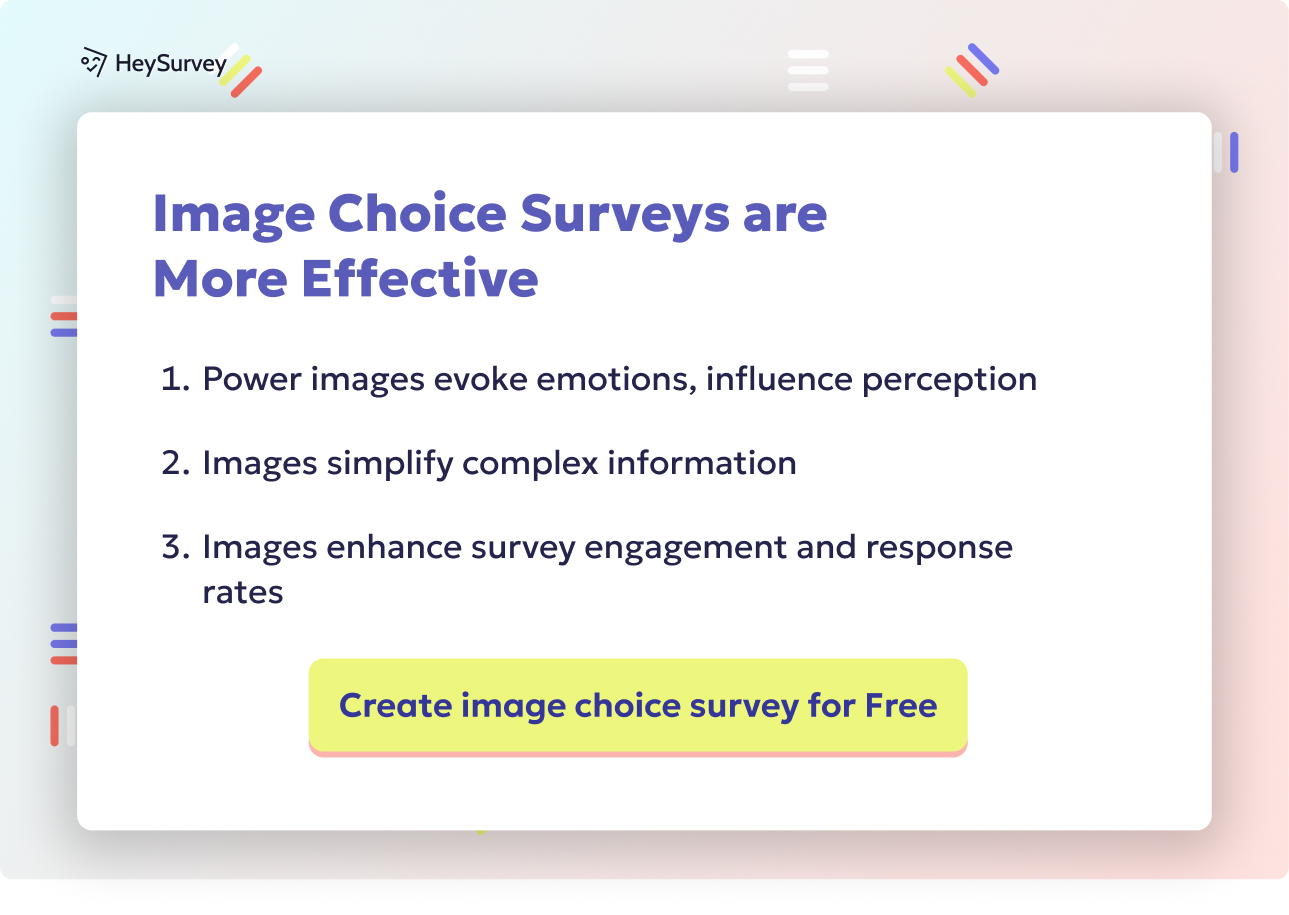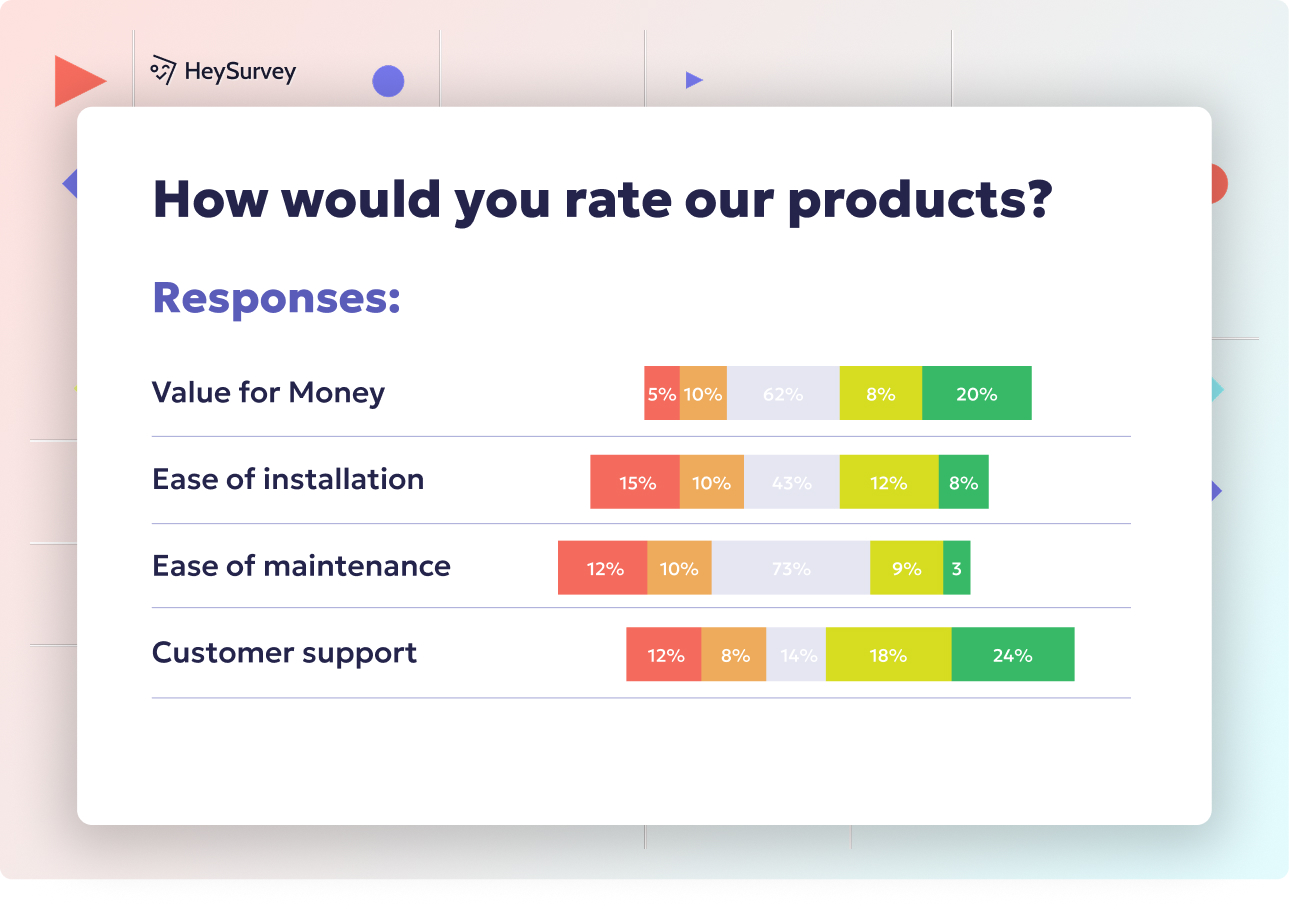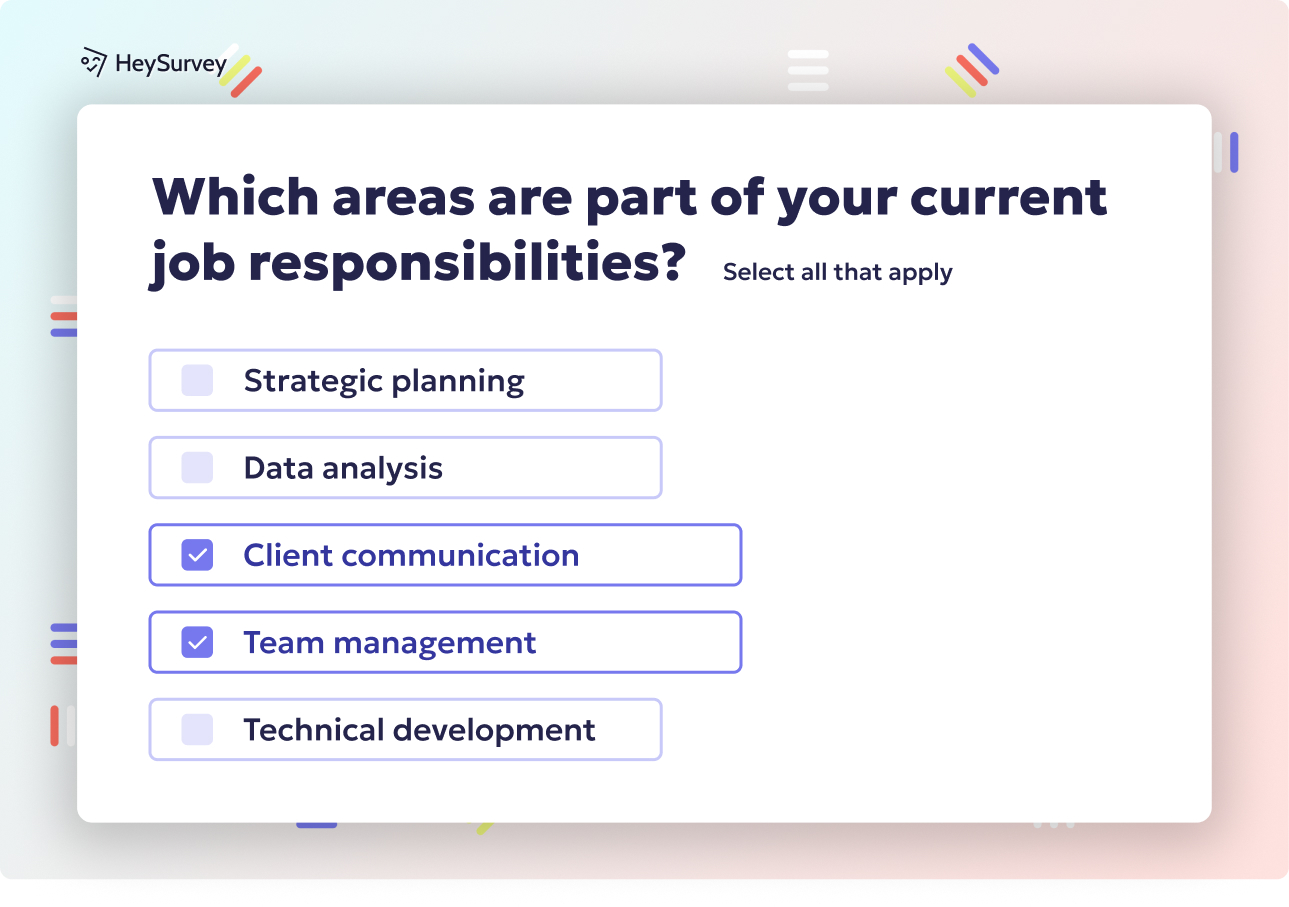31 Survey Question Mistakes You Need to Avoid Today
Discover 25 common survey questions mistakes with real examples and expert tips to craft clear, unbiased, and effective surveys that deliver results.
Every question in a survey casts a long shadow over the answers you’ll collect, the customer insights you believe, and the business decisions that follow. Draft the wrong questions and your data won’t just be flawed—it’ll be misleading, sending even the smartest teams on wild goose chases. Whether you’re tackling a DIY research project, running up against tight deadlines, or just skipped a pilot test, those common survey question mistakes lurk around every corner, waiting to trip you up. Let’s dive into these blunders, see how they sneak into even the best-intentioned surveys, and most importantly, learn how to outsmart them for results you can trust.
Leading Questions
Why & When People Use (or Accidentally Slip Into) Leading Questions
It’s only human to want your research to “prove” what you already believe. Leading questions lure survey creators who crave validation and certainty, not ambiguity. When you set out to confirm a pet hypothesis or please the boss, every word can unwittingly bias the response. Leading survey questions examples creep in when survey-makers, swayed by unconscious bias or a persuasive urge, shape queries to fish for specific feedback.
Stakeholders in customer satisfaction surveys, political polling, or high-stakes market research often pressure writers to produce “good news” for their brand or agenda. In these environments, the line between friendly enthusiasm and manipulative suggestion blurs quickly. Without a robust peer review or skeptical editor to flag them, leading questions slip through, distorting reality as they go.
This kind of bias can tank your data quality. Leading queries can overinflate satisfaction scores, hide true customer pain points, and ultimately nudge organizations into costly, misguided moves. Data distortion born of suggestive questioning undermines the very reason you asked in the first place.
Five Sample Problem Questions
- “How much did you enjoy our outstanding new feature?”
- “Don’t you agree that our customer service is excellent?”
- “How quickly did our friendly support team fix your issue?”
- “Why do you prefer our product over competitors’?”
- “How likely are you to recommend our amazing brand to friends?”
Even the best researchers slip up here. A little innocent excitement, a dash of corporate pride, and suddenly, your survey’s practically a commercial. If your survey questions sound like ad copy, stop and rewrite. Aim for neutral, unembellished language—your data will thank you. Resist the urge to use leading phrases, even if your marketing department is watching over your shoulder.
Research indicates that leading questions can significantly distort survey data, with studies showing that 61% of respondents' opinions shifted when exposed to such questions. (link.springer.com)

Creating your survey with HeySurvey is a breeze—even if you’ve never tried it before. Just follow these simple steps, and you’ll have your survey ready in no time.
Step 1: Create a New Survey
To get started, head over to HeySurvey and create a new survey. You can either:
- Start from an empty sheet if you want full control and customization, or
- Choose a pre-built template that matches the type of survey you want to create.
Templates give you a great head start with structured questions already in place. Once you pick, the Survey Editor will open, showing your new survey ready to be edited. Now you’re set to add your questions!
Step 2: Add Questions
Next, click Add Question to insert questions into your survey. HeySurvey offers a variety of types:
- Choice questions for single or multiple responses
- Text questions for open-ended answers
- Scale questions like Likert or NPS ratings
- And more like number, date, or file upload
Type your question text, add descriptions if needed, and adjust settings like making a question required. You can even add images or GIFs to keep things lively. Remember to break complicated questions into single ideas to avoid common survey question mistakes discussed earlier!
Step 3: Publish Your Survey
When your questions are ready and polished, click Preview to test how your survey looks and flows. Make any last tweaks you want here. Then hit Publish to make your survey live. You’ll receive a shareable link you can send to respondents or embed on your website.
Publishing requires a free HeySurvey account, so sign up or log in if you haven’t already.
Bonus Step: Apply Branding
Want your survey to look like it’s part of your brand? Upload your logo and customize colors, fonts, and backgrounds using the Designer Sidebar. This brings your survey to the next level with a polished, professional look.
Bonus Step: Define Settings
Adjust key settings like:
- Survey start and end dates
- Response limits
- Redirect URLs after completion
- Whether respondents can view results
Fine-tuning these makes your survey management smoother.
Bonus Step: Skip Into Branches
Use branching logic to customize the path respondents take based on their answers. This ensures your survey stays relevant to each participant and collects richer data. You can even create multiple endings tailored to different profiles or response patterns.
Ready to start? Tap the button below to open a survey template and begin crafting your perfect survey with HeySurvey!
Double-Barreled Questions
Why & When They Appear
Sometimes saving space can cost you dearly. That’s the trouble with double-barreled survey question examples—they try to condense two (or more!) ideas into one. You’re busy and want to keep the survey short, so you combine related concepts, like pay and career growth, into a single mega-question. Double-barreled questions look efficient but end up muddying what respondents actually mean.
When no one reviews the questionnaire with fresh eyes or checks for clarity, these two-headed monsters sneak in. You’ll find them often in employee engagement surveys, where HR wants to know about everything from culture to benefits all at once, or in product feedback forms when time and patience are short. But in the rush to the finish, you sacrifice clarity for conciseness.
The real problem? Combined questions produce foggy answers. A respondent may love their pay but hate their career prospects (or vice versa), but you’ll never know which they’re rating if both are tangled in one checkbox. Mixed feedback means you can’t accurately act on the results, which defeats the purpose of the survey.
Five Sample Problem Questions
- “How satisfied are you with your pay and career growth?”
- “Rate the taste and packaging of our meal kit.”
- “Was our website fast and easy to navigate?”
- “How happy are you with management and workplace culture?”
- “Did the webinar inform and entertain you?”
The fix is simple but essential. Break every double-barreled question into its component parts. Each survey question should stick to just one idea—just one! This makes it easier for respondents to answer truthfully and for you to collect actionable, reliable data. When in doubt, more questions (each asking about just one thing) are better than fewer, fuzzy ones.
Double-barreled questions in surveys can lead to ambiguous responses, as respondents may be unsure which part of the question they are addressing, resulting in unreliable data. (scribbr.com)
Loaded Questions
Why & When They Surface
Now we’re venturing into juicy territory. Loaded survey questions definition: queries that smuggle in assumptions, expecting respondents to confess, defend, or react emotionally. These are not your garden-variety mistakes—they’re engineered (sometimes on purpose) to stoke drama.
You’ll spot loaded questions most frequently in political polling, advocacy campaigns, and media surveys that want a sensational headline. Their aim is to force an admission (“When did you stop…?”), slip in a veiled accusation, or provoke strong emotion for an eye-catching chew on the evening news.
But sometimes, overloaded questions just result from clumsy phrasing, misjudged humor, or a writer unaware of the power words packed into their survey. Whatever the root, these questions distort the truth by boxing respondents into corners they never meant to occupy.
A loaded question doesn't just bias your data; it paints it in neon, warping nuances and silencing careful, honest feedback. The result: survey headlines that sound dramatic but don’t reflect reality for most people.
Five Sample Problem Questions
- “Where did you hide the defective units you produced?”
- “What do you think of the government’s disastrous tax plan?”
- “Have you stopped wasting money on overpriced coffee?”
- “How harmful do you believe social media is for teens?”
- “Why are you opposed to safer autonomous vehicles?”
Cue the eye rolls and the defensive stares—these queries put respondents on the spot, force loaded answers, and sabotage real insight. If your survey question makes assumptions, back up and rewrite for objectivity. Every question should allow room for varied perspectives, not just the dramatic extremes. Subtlety beats sensationalism when your goal is genuine meaning.
Ambiguous or Vague Questions
Why & When They Occur
If reading a survey question leaves you scratching your head, wondering, “What exactly do they mean by that?”—congratulations, you’ve found an ambiguous or vague question. Poor wording often creeps in when you’re rushing, skipping that all-important pilot test, or just assuming everyone thinks the same way you do.
Ambiguity is a frequent culprit in pulse surveys, where teams want feedback fast and don’t pause to sense-check the words. In mobile-first questionnaires, where space is limited, vague shorthand can seem efficient—until no one is quite sure what’s being asked. Ambiguous survey questions examples result when you don’t define what counts as “good,” “simple,” or “adequate.”
Errors here drain surveys of meaning. If every respondent interprets the question differently, your results aren’t just fuzzy—they’re meaningless. The value of your survey drops to zero if “regularly” or “fast” means one thing to you and another to everyone else.
Five Sample Problem Questions
- “Do you use our product regularly?”
- “Was the delivery fast?”
- “How was your recent experience?”
- “Do you earn a good salary?”
- “Is the interface simple?”
Vague language is survey quicksand: answers you get are impossible to interpret or compare. Swap imprecise terms for hard numbers (e.g., “daily, weekly, monthly”) or clear ratings. If in doubt, define every key term. Before launching any survey, hand it to someone without inside knowledge. If they hesitate—even for a second—you’ve got an opportunity to clarify.
Unclear survey questions containing poorly defined terms can lead to biased estimates, as demonstrated by significant differences in results when such questions are clarified. (pubmed.ncbi.nlm.nih.gov)
Absolute (Yes/No) Questions with Extremes
Why & When They Sneak In
Absolute survey question pitfalls often masquerade as simplicity. For quick pop-up polls or speedy mobile forms, it’s tempting to slap in binary yes/no questions—especially ones about habits or reliability. But when you back respondents into a corner, requiring “always” or “never” as the only answers, you’ll discover that reality rarely cooperates.
Many teams use these to mirror binary KPIs or to speed up data crunching. You’ll see them on email opt-ins, web feedback forms, or any survey aiming to minimize completion time. They feel efficient, but the price is accuracy: humans are rarely “always” or “never” anything, and these questions ignore the messy middle.
Extreme absolutes force dishonest answers. Most people read “always” or “ever” and realize their real-world habits don’t fit. They either fudge, skip the question, or grumble about your black-and-white thinking.
Five Sample Problem Questions
- “Do you always read our newsletter?”
- “Have you ever missed a payment?”
- “Do you eat breakfast every day?”
- “Have you never complained about the app?”
- “Do you completely trust online banking?”
Binary extremes almost always sacrifice nuance. Swap in frequency scales or graded response ranges whenever possible. If you must use yes/no, drop the “always,” “never,” and “completely.” The goal? Survey questions that reflect reality—not perfection. The insights you gather will suddenly make a lot more sense.
Unbalanced or Biased Scales
Why & When They Happen
Ah, the sneaky subtlety of survey design! Unbalanced or biased scales trip even seasoned researchers. It happens innocently: someone copy-pastes a Likert scale, but leaves out the low end (“Very Poor”), or stacks extra positive options. Maybe you’re hoping for glowing reviews, maybe you’re just not sure how scales really work.
Unbalanced scales are frequent in NPS (Net Promoter Score) follow-ups and product-feature ratings. Rating an “excellent” onboarding process on a scale that has five ways to express approval but only one to say lukewarm things? Oops. The lack of statistical know-how or the pressure to show progress often drives this error.
The result is a biased Likert scale example—built to gently funnel respondents toward the “good” side. Answers end up clustered in the high numbers, not because everyone’s thrilled, but because the survey quietly encourages that story.
Skewed scales skew your data. You’ll never know if users truly loved, hated, or merely tolerated your features. Instead, you get misleadingly positive feedback—and a warped sense of reality.
Five Sample Problem Questions
- Scale: “Excellent / Good / Fair / Poor” (missing “Very Poor”).
- Scale: “Very satisfied / Satisfied / Somewhat satisfied / Neutral” (no dissatisfied options).
- “How would you rate our flawless onboarding process?” (paired with 5-star scale).
- “Rate the benefit: Life-changing / Very big / Big / Moderate / Small.”
- “How valuable was the session? Extremely / Very / Moderately / Slightly.”
Keep your scales even and neutral. Offer as many choices on the negative end as on the positive, and avoid too-clever adjectives that steer responses. Balanced options show respect for strong opinions—good or bad—and lead you to results you can actually rely on.
Non-Exhaustive or Non-Mutually-Exclusive Response Options
Why & When They Crop Up
This is the land of non-exhaustive survey choices and overlapping answer options—the bane of accurate data. Under pressure, checklist creators may slap together a set of response categories without double-checking coverage. You forget an income group, overlap age brackets, or skip the “Other” catch-all.
This is common in demographic and segmentation questions, or anywhere people can pick more than one option. You want to keep things simple but end up locking out valid answers or forcing people into categories that don’t fit. Overlap in options (like a 34-year-old who can check two boxes) is another classic mistake—hello, data ambiguity!
This misstep renders quantitative results misleading. Lump people into the wrong buckets, and your insights lose value fast.
Five Sample Problem Questions
- Age brackets: “18–24, 25–34, 34–44, 45+.”
- Income: “<25k, 25k–50k, 50k–75k, 75k–100k.” (No >100k.)
- “Which devices do you use? Phone, Laptop, Tablet” (no desktop).
- “Choose your department: Sales, Marketing, Tech, Engineering” (overlap).
- “Where did you hear about us? Facebook, Instagram, Social Media.”
For accuracy, every possible answer needs a place—even if that place is just “Other (please specify).” Make categories clear, distinct, and truly exhaustive. Never assume you know your respondents better than they know themselves!
Social Desirability & Sensitive Questions Framing Errors
Why & When They Arise
Now we’ve entered sensitive survey questions mistakes territory. Topics that stir moral judgment—income, habits, personal health—can’t be handled with ham-fisted directness. Sometimes, question-writers forget just how awkward it is to answer a survey that feels like a job interview with your grandma.
Such questions are common in HR, diversity reviews, health behavior studies, and financial surveys. When anonymity is overlooked, or no indirect questioning used, responses skew “socially desirable.” People fudge the truth to save face, avoid embarrassment, or toe the expected line.
The risk? Datasets so sanitized they’re useless. Inflated rates of good deeds, low reports of bad habits—sound familiar? If your survey makes respondents squirm, expect them to fudge. It’s not lying, it’s just human!
Five Sample Problem Questions
- “Have you ever taken illegal drugs?”
- “Do you recycle every day?”
- “How many times have you lied to your manager?”
- “Do you donate at least 10% of your income to charity?”
- “Are you overweight?”
The fix is a thoughtful one. Guarantee privacy, use indirect or randomized answer techniques, and keep judgmental language at bay. Let people answer honestly without fearing the repercussions. Method matters: the safer you make respondents feel, the truer your data will be.
Survey Question Design Best Practices – Dos & Don’ts
Designing flawless surveys is an art and a science—a few survey question best practices stand between you and clean, actionable data. Start with a pilot test. Get fresh eyes on your survey to unearth tricky wording, ambiguous language, or accidental bias.
Keep every question neutral and direct. Ban adjectives that lead, scale options that lean, and binary “always/never” phrasing. Each query should home in on a single idea, not two. Hop back to the double-barreled section if you’re tempted to combine.
Response options should be balanced, exhaustive, and mutually exclusive. Offer true coverage for all possible answers, and make sure no overlap leaves respondents guessing. Always add an “Other (please specify)” for those you haven’t anticipated.
Protect privacy for sensitive questions. State anonymity clearly, and use indirect phrasing if you’re asking about anything sticky or personal. This applies to topics from income to health to integrity.
Your quick checklist for survey perfection:
- Pilot test with real people before launch
- Phrase every question in neutral language
- Address only one topic per question
- Build balanced, symmetrical response scales
- Ensure all answer choices are exhaustive and non-overlapping
- Add an “Other” option or a write-in when needed
- Guarantee respondent anonymity on sensitive issues
Every misstep above—leading, double-barreled, loaded, vague, absolute, unbalanced, non-exhaustive, or too-personal—has a simple fix. Take time to revise, review, and reflect on every phrase. Knowing how to fix survey question mistakes is half the battle; putting it into practice is where the magic happens. Smart surveys mean smarter decisions, and smart decisions win every time.
Related Question Design Surveys

29 Quantitative Survey Research Questions Example for Success
Explore 25+ quantitative survey research questions example with clear explanations and tips for c...

32 Good Survey Question to Boost Your Data Quality
Discover how to craft good survey questions with 30 sample questions across 8 types for better da...

29 Fun Survey Questions Ideas to Engage, Entertain & Learn
Explore 25+ fun survey questions ideas to engage, entertain, and gather valuable insights with cr...

